When it comes to aviation weather systems, AWOS vs ASOS is a topic that every pilot, air traffic controller, and airport operator should master. AWOS and ASOS are the backbone of real-time weather data in aviation, but understanding their differences is key to ensuring safe and efficient flight operations. In this guide, we’ll dive deep into AWOS vs ASOS, exploring their definitions, features, functionalities, and how they stack up against each other. Whether you’re managing a large international airport or a small regional airfield, knowing the ins and outs of AWOS vs ASOS will help you make informed decisions that prioritize safety and operational success.
What Is AWOS? Breaking Down the Automated Weather Observing System
To start our exploration of AWOS vs ASOS, let’s first define AWOS. AWOS stands for Automated Weather Observing System, a critical tool designed to collect and disseminate real-time weather data at airports. AWOS is engineered to operate continuously, 24/7, without the need for constant human intervention, making it a reliable source of weather information for aviation professionals.
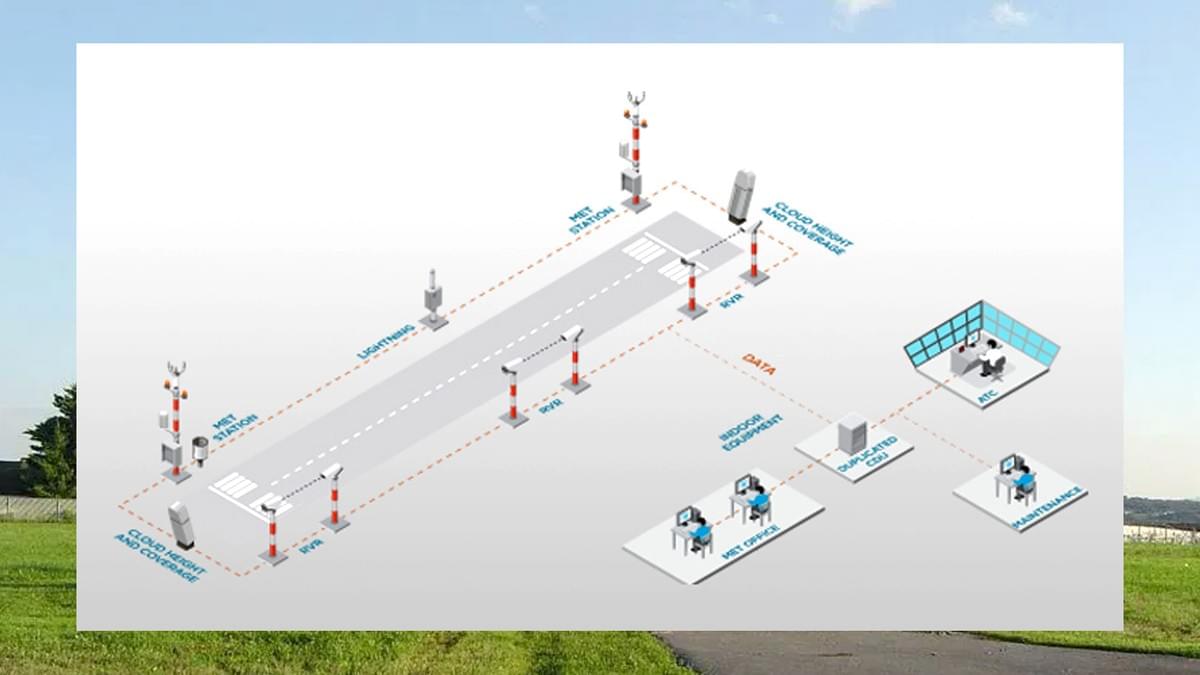
Key Features of AWOS
AWOS is built around a suite of sensors that measure essential meteorological parameters. These sensors include:
- Anemometers to track wind speed and direction—vital for takeoffs and landings.
- Thermometers to record temperature, which affects air density and aircraft performance.
- Barometers to monitor atmospheric pressure, a key indicator of weather changes.
- Visibility sensors to determine how far pilots can see, critical for low-visibility operations.
One of the standout features of AWOS is its simplicity. Unlike more complex systems, AWOS is designed to focus on the most essential weather data, making it easy to install, operate, and maintain. This simplicity also makes AWOS a cost-effective choice for smaller airports, heliports, and remote airfields where budget constraints are a priority.
How AWOS Functions in Aviation
AWOS works by continuously collecting data from its sensors and processing that data into easy-to-understand reports. These reports are then made available to pilots, air traffic controllers, and airport staff through various channels, including radio frequencies, digital displays, and integration with other aviation systems like CTAF (Common Traffic Advisory Frequency).
For example, a pilot approaching a small regional airport equipped with AWOS can tune into the local frequency to receive real-time updates on wind speed, visibility, and temperature—all provided by AWOS. This information allows the pilot to make quick, informed decisions about landing approaches and potential weather-related risks.
Why AWOS Matters for Smaller Airports
In the context of AWOS vs ASOS, AWOS shines in settings where comprehensive data isn’t necessary, but reliable basic weather information is non-negotiable. Smaller airports and remote locations often don’t have the resources to support more complex systems, which is where AWOS steps in. It delivers the essential data needed to keep flights safe without the added cost or complexity of larger systems.
AWOS also offers flexibility. It can be tailored to the specific needs of an airfield, whether that means adding a sensor for humidity or focusing solely on wind and visibility. This adaptability makes AWOS a versatile choice for a wide range of aviation environments.
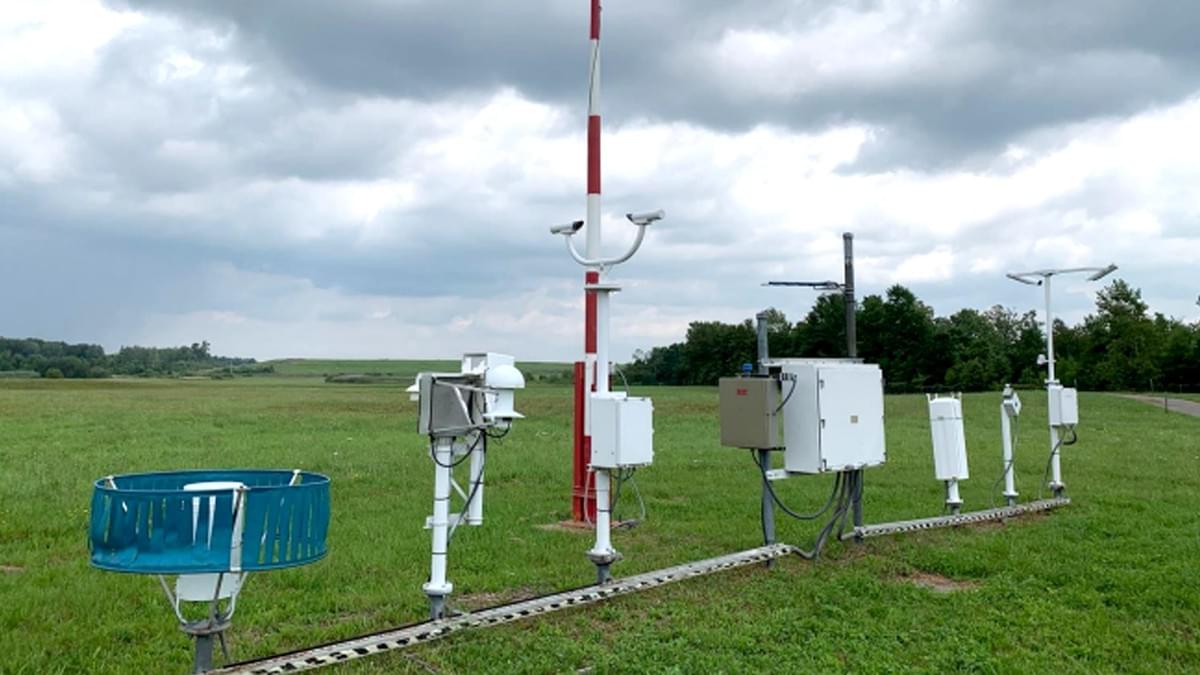
What Is ASOS? Exploring the Automated Surface Observing System
Now that we’ve covered AWOS, let’s turn to the other side of AWOS vs ASOS: ASOS. ASOS stands for Automated Surface Observing System, a more comprehensive weather monitoring system designed for larger, busier airports. ASOS is known for its ability to collect and report a broader range of meteorological data, making it a cornerstone of weather management in complex aviation environments.
Key Features of ASOS
ASOS builds on the capabilities of AWOS by adding advanced sensors and functionalities. Some of its key features include:
- Cloud height detection, which is critical for determining ceiling levels—essential for instrument flight rules (IFR) operations.
- Automated alerts for severe weather conditions, such as thunderstorms, heavy fog, or strong winds, giving pilots and controllers early warning.
- Measurement of additional parameters like dew point, precipitation type and intensity, and even runway surface conditions (in some setups).
Like AWOS, ASOS operates 24/7 without human intervention, ensuring that weather data is always up-to-date. However, ASOS goes a step further by integrating seamlessly with other critical aviation systems, such as ATIS (Automatic Terminal Information Service), which provides pilots with continuous updates on airport status and weather conditions.
How ASOS Functions in Aviation
ASOS collects data from a network of high-precision sensors, processes that data using advanced algorithms, and generates detailed weather reports. These reports are distributed through multiple channels, including ATIS, digital databases, and air traffic control systems, ensuring that everyone involved in flight operations has access to the same accurate, real-time information.
For example, at a major international airport, ASOS might detect a sudden drop in visibility due to fog. It would immediately update the ATIS broadcast, alerting incoming pilots to the changing conditions. This allows pilots to adjust their flight plans, request instrument approaches, or even divert to alternate airports if necessary—all based on data from ASOS.
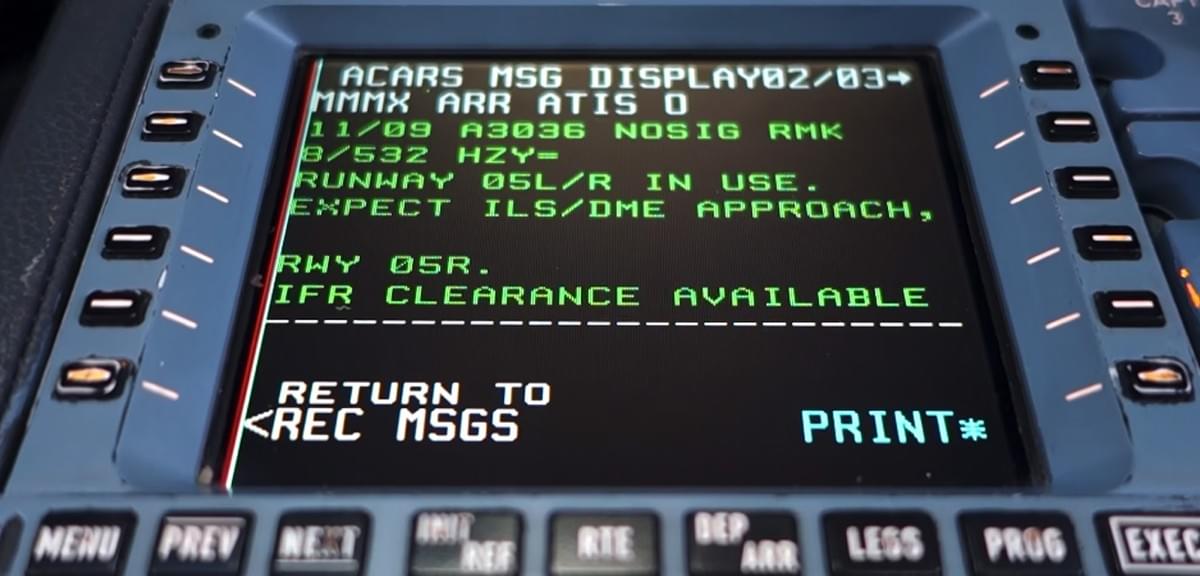
Why ASOS Matters for Larger Airports
In the debate of AWOS vs ASOS, ASOS is the clear choice for larger airports with high traffic volumes and complex operational needs. These airports require detailed, multi-layered weather data to manage takeoffs, landings, and air traffic flow efficiently. ASOS delivers this by providing not just basic parameters but also insights into cloud cover, precipitation, and severe weather risks—all of which are critical for safely managing hundreds of flights per day.
ASOS also plays a key role in regulatory compliance. Many aviation authorities, including the FAA, require larger airports to maintain ASOS to meet safety standards, as its comprehensive data helps reduce the risk of weather-related accidents.
AWOS vs ASOS: Core Differences in Functionality
Now that we understand what AWOS and ASOS are, let’s directly compare AWOS vs ASOS by examining their core differences in functionality. While both systems aim to provide weather data for aviation, their capabilities, scope, and target use cases set them apart.
Data Range and Complexity
One of the most significant differences in AWOS vs ASOS is the range and complexity of data they collect.
- AWOS focuses on basic meteorological parameters: wind speed and direction, temperature, atmospheric pressure, and visibility. It provides the “essentials” needed for safe flight operations in simpler environments.
- ASOS, on the other hand, collects comprehensive data: in addition to the basics, it measures cloud height, dew point, precipitation (type and intensity), and even runway conditions. It also generates alerts for severe weather, making it a more robust tool for complex environments.
This difference in data range means that ASOS can provide a more complete picture of weather conditions, which is crucial for larger airports where small changes in weather (like a sudden shift in cloud height) can have major impacts on flight operations.
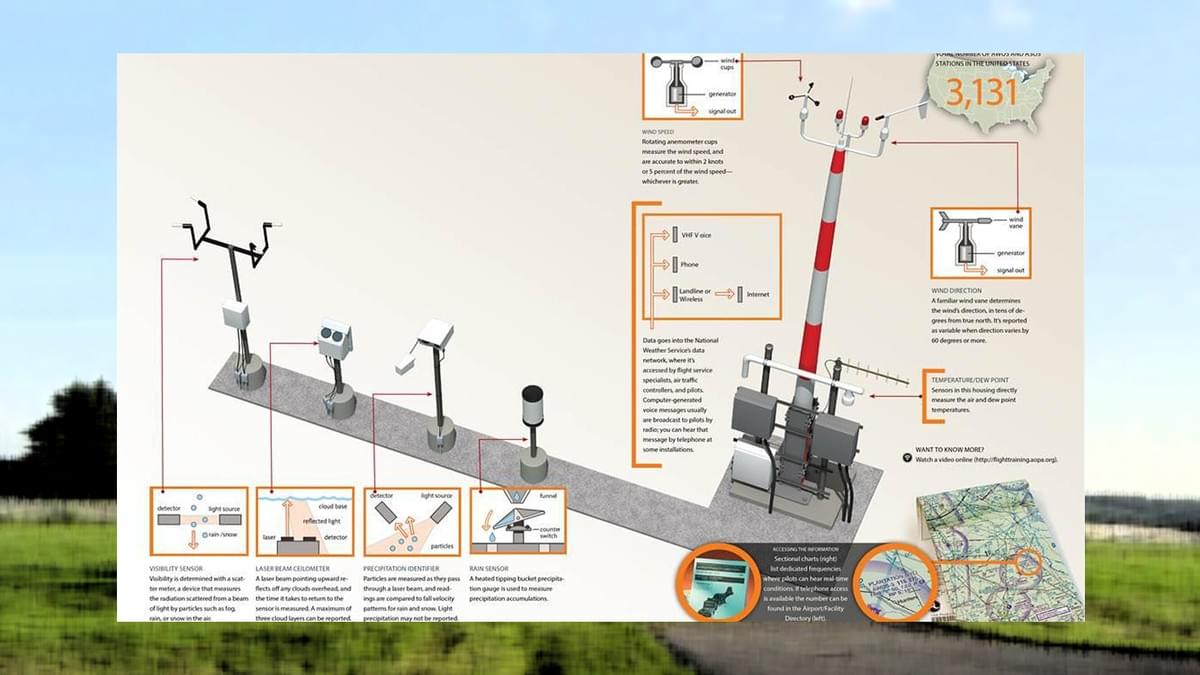
Target Airports and Use Cases
Another key distinction in AWOS vs ASOS is their target applications:
- AWOS is ideal for smaller airports, heliports, and remote locations. These facilities don’t need the full range of data provided by ASOS, and AWOS’s lower cost and simpler maintenance make it a practical choice. For example, a rural airstrip used primarily for private flights or agricultural operations would benefit more from AWOS than ASOS.
- ASOS is designed for larger, busier airports, including international hubs and commercial airports with high traffic volumes. These facilities require detailed weather data to manage complex air traffic, comply with regulations, and ensure the safety of thousands of passengers daily.
Integration with Other Systems
Integration with other aviation systems is another area where AWOS vs ASOS differ:
- AWOS can integrate with basic systems like CTAF, allowing pilots to share weather updates via radio. However, its integration capabilities are limited compared to ASOS.
- ASOS seamlessly integrates with advanced systems like ATIS, which combines weather data from ASOS with other airport information (e.g., runway closures, taxiway conditions) to provide pilots with a single, comprehensive update. ASOS data is also fed into national weather databases, helping meteorologists track regional weather patterns.
This integration makes ASOS a more connected tool, ensuring that weather data flows smoothly across all levels of aviation operations.
Cost and Maintenance
Cost is a practical consideration in AWOS vs ASOS:
- AWOS is generally less expensive to install and maintain. Its simpler sensor setup and limited data range mean lower upfront costs and fewer maintenance requirements. This makes it accessible for small airports with tight budgets.
- ASOS is more costly, both in terms of installation and ongoing maintenance. Its advanced sensors and complex processing systems require specialized expertise to maintain, which adds to the expense. However, for larger airports, this cost is justified by the system’s ability to enhance safety and operational efficiency.
AWOS vs ASOS: Pros and Cons
To further clarify AWOS vs ASOS, let’s outline the pros and cons of each system. This will help you determine which is better suited for specific aviation needs.
Pros of AWOS
- Cost-effective: Lower installation and maintenance costs make AWOS accessible for small airports.
- Simple and reliable: Focuses on essential data, reducing complexity and the risk of technical issues.
- Flexible: Can be tailored to the specific needs of a small airfield (e.g., adding a humidity sensor if needed).
- Easy to operate: Requires minimal training for staff, making it ideal for facilities with limited resources.
Cons of AWOS
- Limited data range: Doesn’t measure advanced parameters like cloud height or precipitation intensity.
- Basic integration: Can’t connect with advanced systems like ATIS, limiting its utility in complex operations.
- No severe weather alerts: Lacks the ability to automatically alert users to incoming storms or extreme conditions.
Pros of ASOS
- Comprehensive data: Provides detailed information on cloud cover, precipitation, and severe weather risks.
- Advanced integration: Works with ATIS and national weather databases, ensuring data is shared across all aviation channels.
- Regulatory compliance: Meets the strict standards required for larger airports, helping them adhere to aviation regulations.
- Severe weather alerts: Automatically detects and reports hazardous conditions, giving pilots and controllers time to respond.
Cons of ASOS
- Higher cost: Expensive to install and maintain, making it impractical for small airports.
- Complex maintenance: Requires specialized technicians to service advanced sensors and processing systems.
- Overkill for small facilities: Provides more data than needed for low-traffic airports, leading to unnecessary costs.
Real-World Applications: AWOS vs ASOS in Action
To better understand AWOS vs ASOS, let’s look at real-world examples of how each system is used in aviation.
Example 1: Small Regional Airport Using AWOS
A small regional airport in the Midwest, serving private pilots and occasional commercial flights, relies on AWOS. The airport has a single runway and limited staff, so simplicity and cost are priorities. AWOS provides real-time data on wind speed, visibility, and temperature—exactly what pilots need to safely take off and land. The system integrates with CTAF, allowing pilots to share updates via radio, and its low maintenance requirements mean the airport staff can manage it without specialized training. For this facility, AWOS is the perfect fit: it delivers essential data without the expense or complexity of ASOS.
Example 2: International Hub Using ASOS
A major international airport in a coastal city, handling over 500 flights daily, uses ASOS. This airport needs detailed weather data to manage heavy air traffic, especially during storm seasons. ASOS measures cloud height, precipitation intensity, and runway surface conditions, providing critical insights for pilots. It integrates with ATIS, so incoming flights receive continuous updates on weather and airport status. During a sudden thunderstorm, ASOS detects the approaching storm and alerts air traffic controllers, who then delay takeoffs and redirect incoming flights. This quick response, made possible by ASOS’s comprehensive data, prevents potential accidents and keeps operations running smoothly.
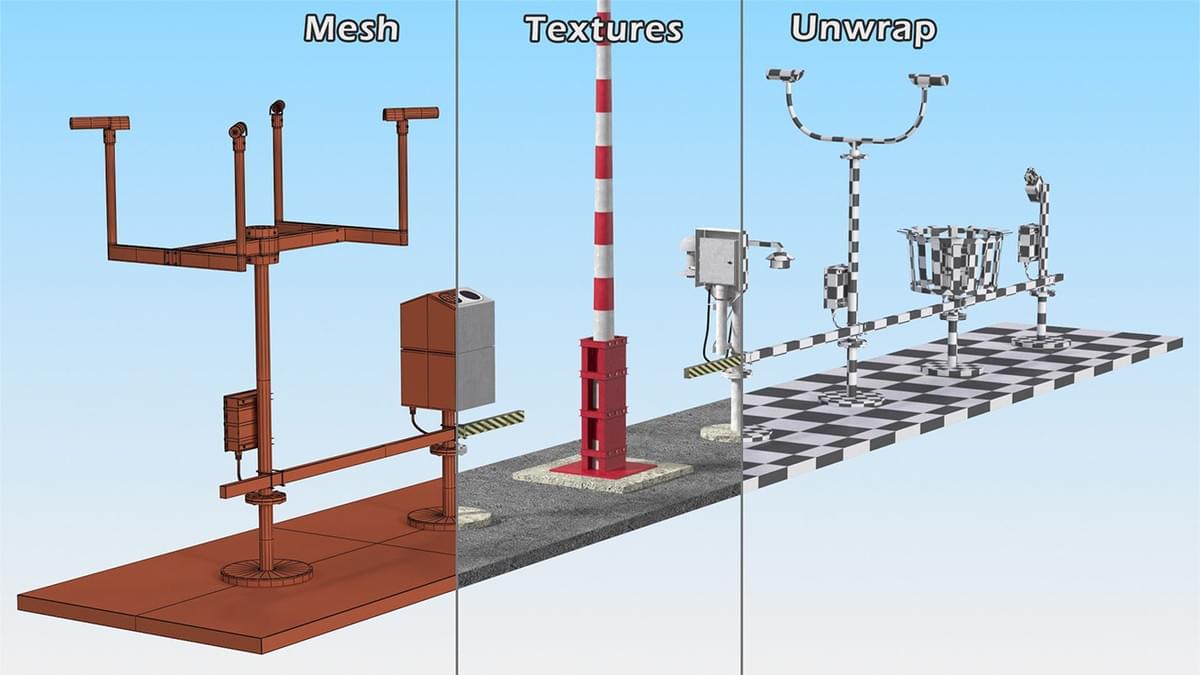
How to Choose Between AWOS and ASOS
When it comes to AWOS vs ASOS, the right choice depends on your airport’s specific needs. Here are key factors to consider:
1. Airport Size and Traffic Volume
- If you manage a small airport with low traffic (e.g., private flights, small commercial planes), AWOS is likely sufficient.
- If you oversee a large airport with high traffic (e.g., international flights, hundreds of daily operations), ASOS is necessary to handle the complexity.
2. Budget Constraints
- AWOS is the better choice if budget is a primary concern, as it costs less to install and maintain.
- ASOS is worth the investment for larger airports that can afford its higher costs and benefit from its advanced features.
3. Regulatory Requirements
- Check local aviation regulations. Many authorities require ASOS for airports with commercial flights or high traffic.
- Smaller airports may only need to meet basic standards, which AWOS can satisfy.
4. Weather Risks in Your Area
- If your airport is in a region prone to severe weather (e.g., thunderstorms, heavy fog), ASOS’s ability to detect and alert on these conditions is critical.
- In areas with stable weather, AWOS may provide enough data to ensure safety.
Enhancing AWOS and ASOS with Haisen’s Aviation Weather Solutions
While AWOS vs ASOS are both essential, modern aviation weather systems can be enhanced with advanced tools like Haisen’s Aviation Automatic Weather Observation Station. Haisen’s solution is designed to work seamlessly with both AWOS and ASOS, filling gaps and improving data accuracy for airports of all sizes.
How Haisen’s System Complements AWOS
For airports using AWOS, Haisen’s system adds advanced sensors to measure parameters like cloud height and precipitation—bridging the gap between AWOS’s basic data and ASOS’s comprehensiveness. This allows small airports to access more detailed data without switching to ASOS, enhancing safety and operational efficiency.
How Haisen’s System Enhances ASOS
For airports with ASOS, Haisen’s system integrates with existing sensors to improve data accuracy and real-time reporting. It uses advanced algorithms to cross-verify data from ASOS, reducing errors and ensuring that pilots and controllers receive the most reliable information possible.
Key Benefits of Haisen’s Integration
- Improved data accuracy: Reduces errors in weather reports, critical for safe flight operations.
- Extended data range: Adds advanced parameters to AWOS or enhances ASOS’s existing capabilities.
- Seamless integration: Works with both AWOS and ASOS, making it a flexible solution for any airport.
- Cost-effective upgrades: Allows small airports to enhance AWOS without the expense of switching to ASOS.
Conclusion: AWOS vs ASOS—Choosing the Right System for Safety
In the debate of AWOS vs ASOS, there’s no one-size-fits-all answer. AWOS is ideal for small airports and remote locations, offering essential weather data at an affordable cost. ASOS, on the other hand, is necessary for larger airports, providing comprehensive data to manage complex operations and ensure regulatory compliance.
Both AWOS and ASOS play critical roles in aviation safety, delivering the real-time weather data that pilots, controllers, and airport operators rely on. By understanding their differences, you can choose the system that best fits your airport’s needs—whether that’s the simplicity of AWOS or the comprehensiveness of ASOS.
And for those looking to enhance their existing systems, Haisen’s Aviation Automatic Weather Observation Station offers a flexible, cost-effective way to bridge gaps in data and improve safety. Contact Haisen today to learn how we can help you make the most of AWOS vs ASOS, ensuring your airport has the weather data it needs to keep flights safe and operations efficient.
Ready to optimize your airport’s weather monitoring? Whether you need AWOS, ASOS, or an enhanced solution, Haisen has you covered. Reach out to our team to discuss your needs and find the perfect fit for your aviation operations.

